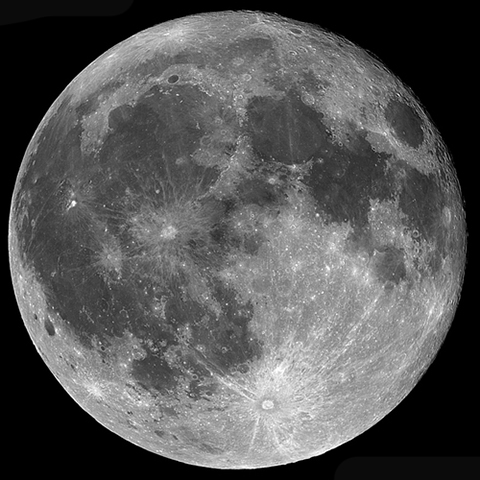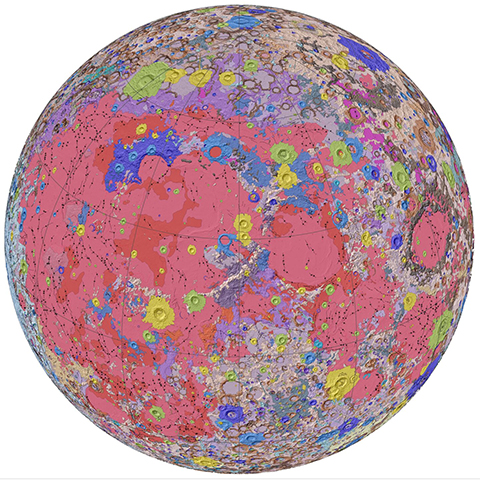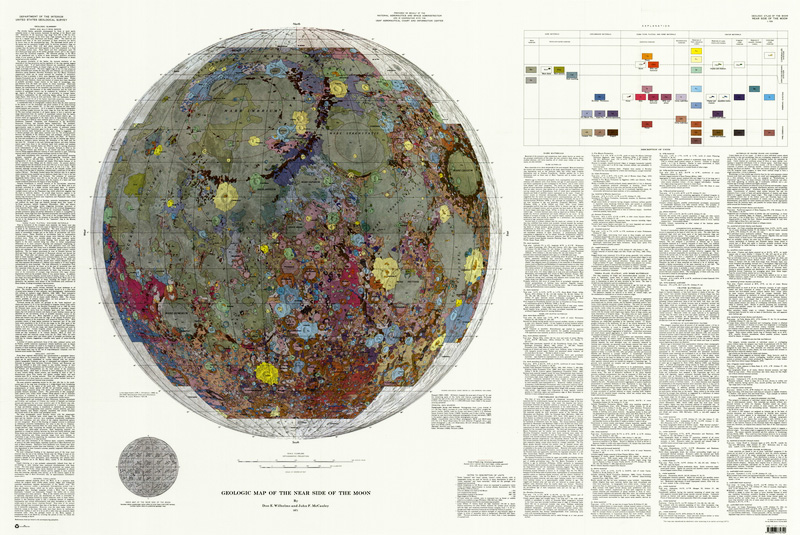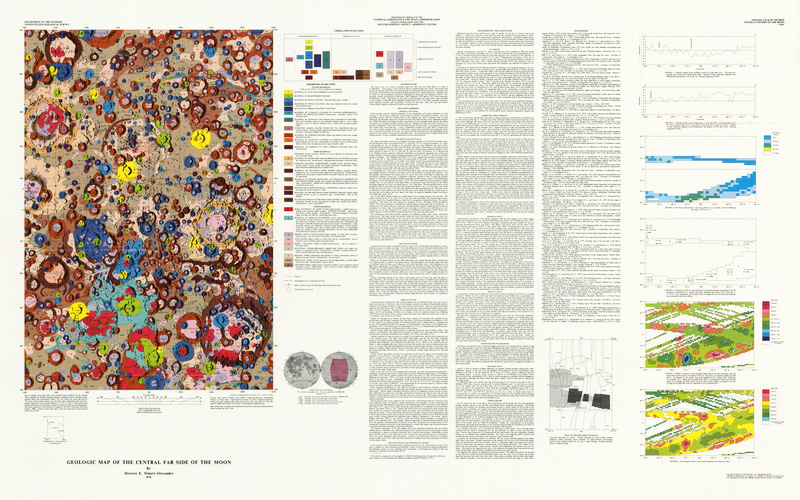Part D
Geology of the Moon
Although most significant geologic processes are no longer active on the Moon, the dynamic events of its distant past are recorded in its rocks. The Moon likely formed from the collision between Earth and a Mars-sized planetesimal about 4.5 billion years ago. Like the rest of the planets in the young Solar System, the Moon experienced a period of intense impact cratering. Volcanism also occurred across its surface, with some of the larger impacts producing large impact basins that subsequently filled with bsaltic lava. This activity progressively decreased and after about a billion years or so, the impact processes and volcanism had waned. With no plate tectonic activity to drive geologic processes, the Moon has been largely quiet for the last 3 billion years or so.
Near Side Geology
Let's explore the geology of the Moon, starting with the near side, or the side that always faces the Earth.
|
|
|
Figure 8-7. The Geologic Map of the Near Side of the Moon. |
Answer Quiz Me! questions D31 through D43 using the Geologic Map of the Near Side of the Moon (see the PDF link below).
|
Geologic Map of the Near Side of the Moon |
|
It's a big map, so it may take a minute to load. |
Principle Data Sources & Map Scale
![]()
![]()
![]()
Explanation of Map Units
![]()
![]()
![]()
Geologic Map
![]()
![]()
![]()
![]()
![]()
![]()
![]()
Far Side Geology
Now we go to the Moon's far side. Note: the far side of the Moon is not the "dark side", as sometimes it gets direct sunlight and sometimes it doesn't, just like the near side. Again, it's a big map, so it may take a minute to load.
|
|
|
Figure 8-8. The Geologic Map of the Central Far Side of the Moon. |
Answer Quiz Me! questions D44 through D50 using the Geologic Map of the Central Far Side of the Moon (see the PDF link below).
|
Geologic Map of the Central Far Side of the Moon |
Data Sources & Map Scale
![]()
![]()
![]()
Correlation of Map Units & Description of Map Units
![]()
![]()
Geologic Map
![]()
![]()
After finishing this lesson, complete the form below:



